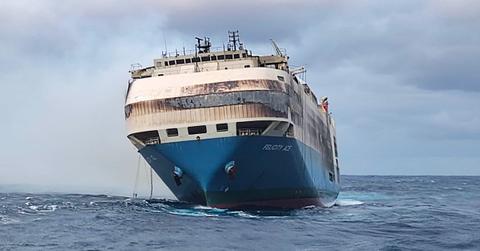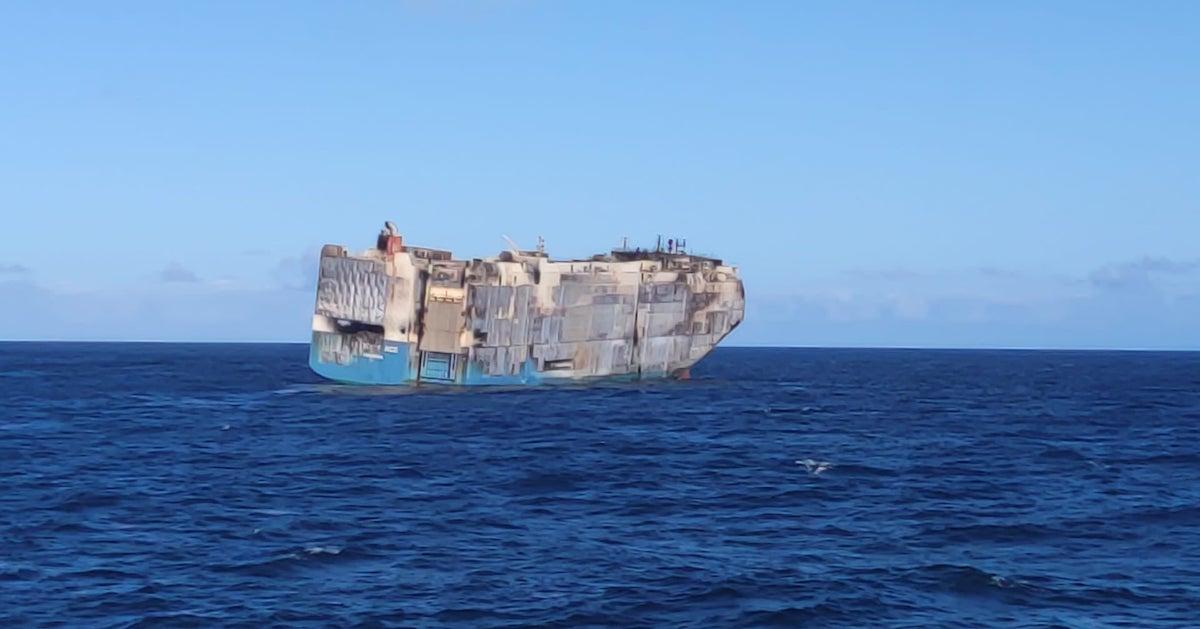Volkswagen Ship Carrying 4,000 Luxury Cars Sinks, Could Potentially Leak Oil Into Atlantic Ocean
Published March 2 2022, 11:54 a.m. ET
Two weeks after catching on fire in the open ocean, a cargo ship carrying luxury cars sank, sending the entire ship, 4,000 brand new cars, and thousands of tons of fuel and oil to the bottom of the Atlantic Ocean.
A disaster that many will measure by the financial losses related to the sunken ship and cars, this incident actually poses a number of environmental and pollution issues. Keep reading for all the details, as well as a look into how it could impact the ocean and marine life.
How did the Felicity Ace cargo ship catch fire?
As per The Drive, the Felicity Ace embarked on a journey through the Atlantic Ocean from Emden, Germany on Feb. 10, 2022. The ship was scheduled to dock in Rhode Island on Feb. 23, bringing with it around 4,000 Volkswagen Auto Group cars, including vehicles made by Porsche, VW, Bentley, Audi, Porsche, and Lamborghini, of both gas-powered and electric varieties, according to The Drive and The Wall Street Journal.
However, a few days into the Felicity Ace’s journey, on Feb. 16, the ship caught fire in the Atlantic Ocean near Portugal's Azores Islands, according to the Felicity Ace Information Center. Authorities have yet to find evidence of what started the fire, but many suspect that the culprit is the lithium batteries used in electric cars on board.
When the ship first burst into flames, the Portuguese Air Force sent a helicopter to rescue the ship’s 22 crew members, and fortunately, everyone was successfully brought to safety, according to the Felicity Ace Information Center. However, without a crew, the boat was left to its own devices, burning and floating through the Atlantic Ocean.
The Felicity Ace cargo ship finally sank, bringing down thousands of luxury cars.
Ever since the fire first erupted, MOL Ship Management (the Felicity Ace’s management company), has been working with authorities from Portugal to figure out exactly what happened, find a solution, and hopefully salvage the ship.
But on March 1, two weeks after the fire broke out, MOL Ship Management updated the Felicity Ace Information Center, declaring that the ship sank at around 9 a.m. local time, while positioned at about 220 nautical miles off the coast of the Azores. MOL attributed the sinking to a “list to starboard,” which is when a ship fills with water and tilts to the right.
The sinking cargo ship could have a number of negative environmental effects.
As the boat sank, a “small oil slick” could be seen in the water, as per MOL, who noted that authorities will continue to monitor the area for pollution. Authorities expressed concern that the ship could pollute the ocean, as it was carrying 2,200 tons of fuel and 2,200 tons of oil, according to AP News. Boats and cars contain many other potential pollutants, such as plastics, paint, and wires, as noted by The New York Times.
According to Oceana via The Times, the Azores seabed is filled with beautiful coral reefs as well as dolphins, sharks, whales, and many other marine animals. If fuel, oil, and other pollutants leak from the Felicity Ace and into the ocean, it could hurt and even kill nearby coral reefs and the animals who call the Azores seabed home.
Electrek shared a statement written by Volkswagen, confirming that the vehicles are too ruined to be sold, but that all the damage is covered by insurance. With insurance set to cover the destroyed cars, it seems unlikely that Volkswagen or MOL would attempt to recover the sunken ship and the 4,000 cars from the ocean’s depths, as these decisions tend to be guided more by money than by environmental ethics.
Green Matters’ new book, Green Living, is the perfect guide to living an eco-friendly lifestyle for people at every stage of the process. You can order Green Living here.

